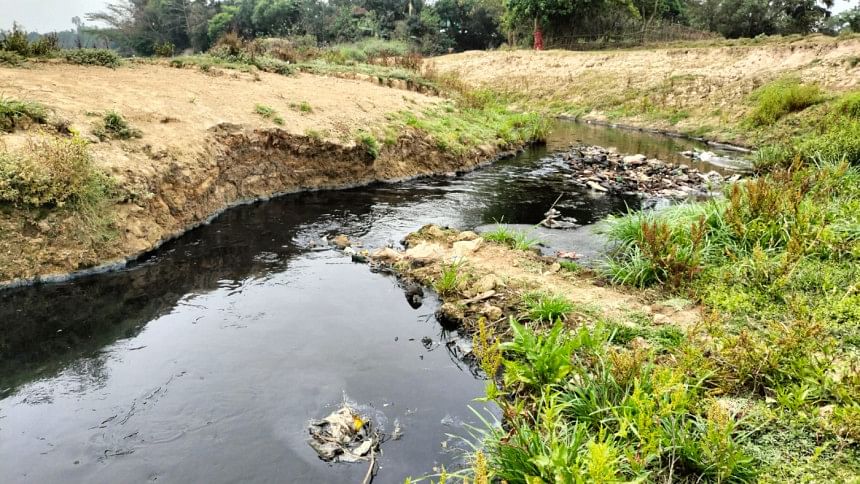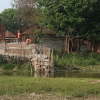Sutang: from thriving ecosystem to toxic waterway

Once a thriving aquatic ecosystem, the Sutang river in Habiganj has now transformed into a toxic waterway due to indiscriminate industrial pollution from nearby factories.
The river's water, now pitch black and tainted with microplastics and heavy metals, has oxygen levels so low that no aquatic organism can survive.
Sutang, an 82-kilometre-long transboundary river between Bangladesh and India with an average width of 36 metres, is meandering in nature.
It originates in the hilly region of India's Tripura and enters Bangladesh through the Chunarughat upazila of Habiganj before joining the Kalni river in Lakhai upazila.
"I've used water from this river for domestic purposes for years, but now I wouldn't even dare go near it. The water is extremely polluted due to industrial runoff," said Joytara Bibi, a farmer from Nurpur village.
Ranjit Paul, a potter from the Paul Bari area, said he earlier used to collect soil from the river for making pottery items, but not anymore.
According to sources, 35 to 40 factories along the riverbank -- producing plastics, food and beverages, textiles, stationery, and ceramics -- discharge untreated industrial waste into the river, contaminating its waters.
Mahbubul Mia, a fisherman from Sutang village, and several others lamented the loss of their traditional livelihood. "For generations, we lived by fishing, but those days are gone. I now drive a rickshaw because the Sutang river is disappearing," he said.
Tofazzal Sohel, general secretary of Bangladesh Poribesh Andolon's Habiganj unit, said, "Sutang is now completely devoid of fish and other marine species. The water is so contaminated that even after casting nets at 12 different locations on February 22, we barely found trace of any thriving aquatic life."
A team of researchers from Habiganj Agricultural University is conducting a study on the water quality and fish of Sutang and has collected water, fish, and sediment samples from different points of the river to assess the extent of contamination.
"Laboratory analyses have already confirmed the presence of microplastics in both water and fish samples. We have also found that industrial pollution has significantly deteriorated the river's physicochemical parameters, making survival increasingly difficult for fish and other aquatic organisms in the downstream areas," said Iftekhar Ahmed Fagun, a researcher in the team and a lecturer in Department of Aquatic Resource Management of the university.
Contacted, Md Ferdous Anwar, director of the Department of Environment in Sylhet, said his office has submitted an action plan with 8–9 recommendations to headquarters. "If approved, the river can be saved. We are also implementing measures for 24-hour monitoring of industrial ETPs," he added.

 For all latest news, follow The Daily Star's Google News channel.
For all latest news, follow The Daily Star's Google News channel. 







Comments